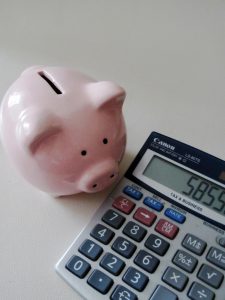 5 ways to get out from under your crushing burden
5 ways to get out from under your crushing burden
In our credit-driven society, debt is a fact of life. It is unusual to meet someone who doesn’t have any debt. Credit cards, a mortgage, auto loans are just some of the integral parts of modern life that are difficult to escape from.
This reliance on credit, coupled with the current sluggish economy, has created problems that many people are unable to solve. Take for example a young person, fresh out of college and just starting a job. They are already working under a staggering amount of student loan debt; they have housing, transportation and living debt already; and if their job doesn’t meet their financial expectations – and many first- or second-jobs do not – their debt situation will get worse.
This person cannot stop living, they need housing and if they don’t have reliable transportation, they cannot keep a job, any job. If the money isn’t there, some bills don’t get paid or are paid late, and the young person already has damage to their credit rating.
Unsustainability doesn’t have any easy fixes
The cycle continues as it becomes more difficult to get credit and the young person continues to run up bills that cannot be paid on time. Eventually, either it gets bad enough where assets are seized or the young person adjusts his or her lifestyle to reflect his or her current reality. Depending on how long that takes, the damage to their credit rating can be very hard to fix.
Recognizing the cycle and stopping it, or avoiding it altogether, is difficult and denying that there is a problem is much more common than people realize. Unfortunately, many people begin the cycle anew as soon as they can afford to begin to make enough money to pay their bills.
Getting out of the debt cycle
Recognizing that you are in a debt cycle is the first step to getting out, but it is certainly not the last. To break the cycle, you need to understand the following:
- Understand your finances. How much income do you bring in? What are your spending habits? How much debt are you currently carrying? To get a good grasp on your personal finances, you will need to track spending and income for a month or two. It doesn’t take long to get a clear picture of where your money goes. Track every transaction, use a debit or credit card if that makes it easier, but be precise.
- Create a budget. The only way you will be able to live within your means is to have a handle on what those means are. Start with your living expenses – housing, food and transportation – then pare down other expenses. Prioritize what is important to you and cut out those expenses that you don’t need. Strive to pay all your bills while keeping money in the bank.
- Put away the credit cards. Paying with cash or using a debit card keeps you from overextending yourself. If you don’t have the money for a purchase, don’t buy it. Using credit cards, with their high interest rates, makes it easy to continue the debt cycle.
- Change your lifestyle. It doesn’t have to be all at once, but gradually make changes in the way you spend money. Go out to eat one less day per week, miss one concert or sports event. If you are serious about breaking the debt cycle, you need to change your spending habits.
- Talk to a credit repair specialist. Not all debt is created equal and time spent talking to a credit repair company can give you some great ideas on how to ease the debt burden.
According to the management of CreditRepair.co, “Not all debt is unmanageable debt, but getting a handle on what you can and cannot afford is the best way to begin repairing your credit and breaking the debt cycle.”
Kara Perez is the original founder of From Frugal To Free. She is a money expert, speaker and founder of Bravely Go, a feminist financial education company. Her work has been featured on NPR, Business Insider, Forbes, and Elite Daily.